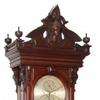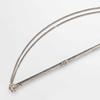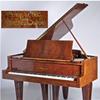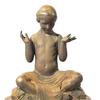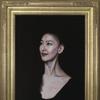Exhibition of Buddhist Art from the Newark Museum Organized Exclusively for Nashville’s Frist Center
- NASHVILLE, Tennessee
- /
- January 09, 2017
Organized by the Newark Museum exclusively for the Frist Center, Secrets of Buddhist Art: Tibet, Japan, and Korea explores one of the great faiths of the world through paintings and sculptures by Japanese, Korean, and Tibetan artists. On view in the Center’s Ingram Gallery from February 10 through May 7, 2017, the exhibition features 109 paintings and sculptures from the Newark Museum’s world-renowned collection of Buddhist art made between the late thirteenth and early twentieth centuries.
Secrets of Buddhist Art provides a basic understanding of how these artistic objects function within the esoteric or “secret” Vajrayana branch of Buddhism. Between the fourth and third centuries BCE, Buddhism split into two main branches: Mahayana and Theravada. Seven centuries later, in the third century, a third form, called Vajrayana, rose within the Mahayana branch. This esoteric school dominates Tibetan practice and is also prominent in Japan. Its devotees participate in initiation and empowerment ceremonies kept secret from outsiders. “A key to understanding these secrets is to study the complex array of both human and divine figures within esoteric Buddhism, as well as the rich, multilayered vocabularies of motifs that instruct and assist practitioners,” said Katherine Anne Paul, curator, Arts of Asia, Newark Museum.
This exhibition marks the first time that a selection of traditional Korean art—including a major depiction of the Geumgangsan Diamond Mountains on a folding screen, as well as 15 other pieces—will be presented in Nashville. “The thematic groupings of objects intentionally transcend national boundaries and encourage viewers to compare each cultures’ interpretations of Buddhism and their distinguishing aesthetic forms and styles,” said Frist Center curator Katie Delmez.
Images of the historical Buddha, born Siddhartha Gautama in the sixth century BCE in present-day Nepal, are prevalent throughout the Buddhist world, as are depictions of great events from his many lifetimes, especially his miraculous birth, departure from home, attainment of enlightenment, first sermon at Deer Park, and realization of nirvana upon his final death.
Buddhist practices of Tibet, Japan, and Korea are also populated with other non-historical Buddhas as well as numerous bodhisattvas. “Bodhisattvas are spiritually realized figures who have attained enlightenment but postpone nirvana (the ceasing of cyclic existence) to assist other sentient beings until all become enlightened,” said Paul. “In art, bodhisattvas frequently are distinguished from Buddhas by jewelry—diadems, earrings, necklaces, armlets, bracelets, anklets—and by luxurious, often gravity-defying clothing that floats around them.”
Secrets of Buddhist Art includes sections that examine how Buddhism explains the cycle of birth, death, and rebirth and which particular Buddha and bodhisattvas are worshipped to promote good health, longevity, and increased wealth. The exhibition also features portraits of teachers and students not only from different regions and periods of time, but also from different Buddhist schools within each region. Particularly rare for any museum collection are the two complete sets of biographical paintings. The detailed hagiographies (biographies of saints) include fifteen Tibetan paintings that illustrate the life of Tsongkhapa and four Japanese paintings that illuminate the life of Tokuhon.
Tibetan Monks to Create Mandala in Education Gallery
As the featured component of the exhibition’s education gallery, Ritual in Action: Making a Mandala Sand Painting, seven Tibetan monks from Drepung Loseling Monastery in India will construct a mandala with millions of grains of colored sand. Mandalas are elaborate circular designs that are intended to represent the universe or a cosmic order. The making of temporary sand mandalas is an expression of devotion unique to Tibetan Buddhism. “The mandala connects to the older works of art and reminds us that this is very much a living practice,” said Delmez.
Beginning on Friday, February 10, visitors can watch the monks work for five consecutive days. The mandala will remain on view for the duration of the exhibition. On Sunday, May 7, the monks will return for the Frist Center’s Free Family Festival Day, ritually destroying the mandala in a closing ceremony that symbolizes impermanence.
Belmont University’s Asian Studies Symposium
Representations of Buddhism, the 2016–2017 Asian Studies Symposium at Belmont University in Nashville, will be held Monday–Friday, February 13–17, and will support Secrets of Buddhist Art: Tibet, Japan, and Korea, with speakers on divergent facets of Buddhism in art, literature, popular culture, social activism, and personal journeys.
Public Programs
Friday, February 10
noon
Curator’s Perspective: “Unlocking the Secrets of Buddhist Art: Tibet, Japan, and Korea” presented by Katherine Anne Paul, PhD, curator, Arts of Asia, Newark Museum
Frist Center Auditorium
Free; first come, first seated
Join curator Katherine Anne Paul for an illustrated lecture that will introduce the stunning aesthetics of Buddhist art. Paul will also translate important visual vocabularies employed to communicate Buddhism. The talk will culminate in a virtual walk-through of a mandala (circular representations of the universe). After the lecture, join us for the opening ceremony of a Tibetan Buddhist mandala sand painting that Tibetan monks will create in the education gallery of Secrets of Buddhist Art. Come experience Buddhist rituals and art in action.
Friday, February 10–
Tuesday, February 14
Sand Mandala Painting Featuring the Mystical Arts of Tibet
Opening ceremony: February 10, 1:30 p.m.
Frist Center Ingram Gallery
Gallery admission required; members free
As part of our presentation of Secrets of Buddhist Art, the Frist Center welcomes the Mystical Arts of Tibet, a touring company of monks from Drepung Loseling Monastery (exiled from Tibet and currently based in South India). For five days, the monks will work in the exhibition’s education gallery, meticulously pouring millions of grains of sand into an elaborate sacred design that invokes the Bodhisattva of Compassion. Their residency will begin with a colorful opening ceremony that features multiphonic chanting and traditional Tibetan musical instruments. The ceremony will be followed by the “Drawing of the Lines,” an exacting process during which the design of the mandala is drawn out. Save the date for Sunday, May 7, when the monks will return on Family Festival Day to destroy the mandala in another beautiful ritual.
February 13–17
Representations of Buddhism—Belmont University Asian Studies Symposium
Free
Writers, pilgrims, devotees, and artists have represented aspects of Buddhist tradition and belief in a multitude of ways and from multiple perspectives. Representations of Buddhism, the 2016–17 Asian Studies Symposium at Belmont University, is designed to examine this remarkable array of resources and depictions. The symposium is intentionally constructed to support the Frist Center exhibition Secrets of Buddhist Art: Tibet, Japan, and Korea. Organizing curator Dr. Katherine Anne Paul will open the conference with a paper titled “Living Hells and Heavens: The Art of Buddhist Rebirths.” Other speakers will highlight divergent facets of Buddhism in art, literature, popular culture, social activism, and personal journeys. Visit belmont.edu/asian-studies/symposium for the full schedule.
Thursday, April 20
Curator’s Tour: Secrets of Buddhist Art
noon
Presented by Katie Delmez, curator, Frist Center for the Visual Arts
Join exhibition curator Katie Delmez as she discusses select works of art and shares the powerful meanings behind their arresting visuals.
Exhibition Credit
This exhibition was organized by the Newark Museum.
Sponsor Acknowledgment
The Frist Center for the Visual Arts gratefully acknowledges our sponsors: Platinum, the HCA Foundation on behalf of HCA/TriStar Health; Supporting, The Nissan Foundation and Korea Foundation; Hospitality, Union Station Hotel. We also thank our 2017 Frist Gala Nirvana and Mandala Society Patrons. The Frist Center is supported in part by the Metro Nashville Arts Commission, the Tennessee Arts Commission, and the National Endowment for the Arts.
~ ~ ~
About the Frist Center
Accredited by the American Alliance of Museums, the Frist Center for the Visual Arts is a 501(c)(3) nonprofit art exhibition center dedicated to presenting and originating high-quality exhibitions with related educational programs and community outreach activities. Located at 919 Broadway in downtown Nashville, TN, the Frist Center offers the finest visual art from local, regional, national, and international sources in exhibitions that inspire people through art to look at their world in new ways. The Frist Center’s Martin ArtQuest Gallery features interactive stations relating to Frist Center exhibitions. Information on accessibility can be found at fristcenter.org/accessibility. Gallery admission is free for visitors 18 and younger and for members; $12 for adults; $9 for seniors and college students with ID; and $7 for active military. College students are admitted free Thursday and Friday evenings (with the exception of Frist Fridays), 5:00–9:00 p.m. The galleries, café, and gift shop are open seven days a week: Mondays through Wednesdays, and Saturdays, 10:00 a.m.–5:30 p.m.; Thursdays and Fridays, 10:00 a.m.–9:00 p.m.; and Sundays, 1:00–5:30 p.m., with the café opening at noon. For additional information, call 615.244.3340 or visit fristcenter.org.




10270x400_c.jpg)






